If you are searching for flowers that start with G before that let me tell you these are more than 20 plants that start with the letter G and here in this article we will discuss about information on those flowers. So basically what plants begin with G?

Flowers That Start With G are Garden Phlox, gardenia, gaura, gerbera, globe amaranth, gaillardia, geranium. Some more flower that start with letter G is golden chamomile, gladiolus, globe thistle, giant hyssop goldenrod and so on. The list is big that is why i prepared everything about the perennial, annual flowers starts with G. Here are the names of plants start with G includes gaillardia grandiflora, gerbera, Grape hyacinth, gentian violet, Gladiolus and few more.
There are many people question about a specific plant which has small name, easy to pronounce and you can easily write about. So I thought why not provide the list of flowers beginning with G with 6 letters but could not found any flower so the most common plant are with 5 letter is Gorse and with letter 7 are godetia, gerbera etc.
Here the the all the flowers that start with G:
Golden Dew Drop

Durantaerecta (Golden Dewdrop) is a quickly growing plant that is generally a spiky, perennial shrub or tree native to Tropical America, having beautiful rich green branches and free clusters of stunning, brilliant violet-blue blooms that are often bordered in white. The common name Golden Dewdrop derives from their giving rise to dangling clusters of golden fruits.
When sturdy, it can reach a height of 10-20 feet (3-6 meters) and a width of 6-10 feet (2-3 meters); as an annual, it can reach a height of 2-4 feet (60-120 cm) and just a width of 1-2 feet (30-60 cm).
However, it can easily grow in full sun, in a healthy, wet, well-drained atmosphere. Light sunlight and a broad range of soils, especially sandy soils, are no concern for this plant.
Garden Angelica
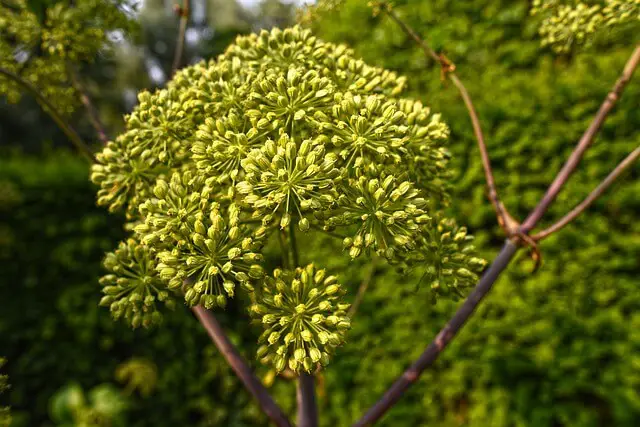
The garden angelica, which has tasty roots & stems, a species of the Apiaceae family, has long been grown. It also has an imposing figure in the garden, attaining lengths of up to 8 feet.
It has strong, vivid green leaves that are sharply toothed or jagged and tall, thick, hollowed stalks in greenish or purple.
Many yellow or green umbels cover the large, rounder flower crowns that bloom in June and are preceded by light, yellow, oval fruits.
Herbalists have also suggested it for respiratory problems like respiratory problems and COPD and to treat bladder infections & put on missed menstrual periods.
Gaillardia
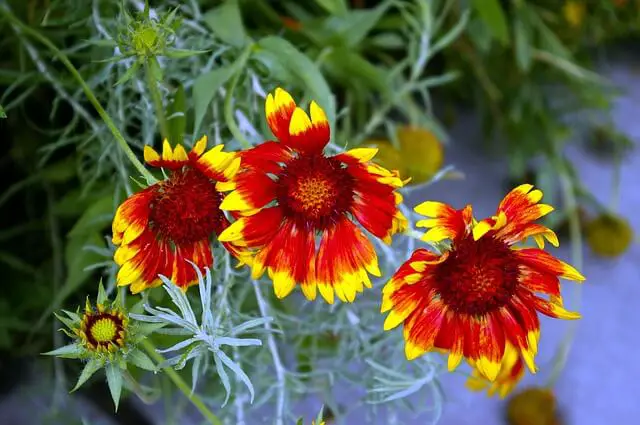
Gaillardia is also known generally as “blanket flower,” a compliment to the bright colors that indicate all of the designs about certain tribes of Native Americans.
These blooms grow naturally in dry and permeable soils. Therefore usually do not provide extra or further watering. It really wouldn’t help to water plants if a long dryness is expected, though they’re capable of surviving all, including the most severe extreme drought.
In addition, root rot can become a problem with Gaillardia when you don’t water them regularly. These plants seem to be more sensitive to “wet feet” than other plants, so putting them in an existing and watered area needs careful planning.
Garden Balsam
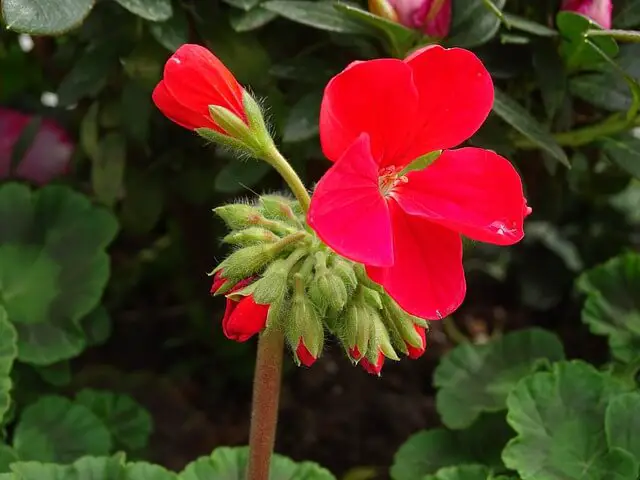
Balsaminaceae impatiens is a popular perennial that blooms in the sun to light shade. It’s simple to cultivate and may be found in greenhouses and garden stores.
Impatiens balsamina is also known as balsam or impatiens, a generic term that involves a wide range of shapes and colors. “Rose Balsam” is another name for balsam.
Another term for the balsam plants is touch-me-not, which has some useful details. The name comes from the end-of-season pods that form and rupture at the simple touch.
Balsam requires moist, well-drained soil & works perfectly in part shade situations. Before transplantation, new balsam improves the soil with fertilizer and part ways clods. The distance should be between 12 and 18 inches (30-46 cm).
Gardenia

Gardenias is a tropical plant that comes in a broadleaf holly bush that is commonly known as (Gardenia jasminoides). However, it is grown as large open potted versions for its fragrant white blossoms. The gardenia is a popular plant for a specific reason: a couple of natural fragrances are as unique, powerful, and unforgettable as the gardenias.
Gardenias can only be grown outside in USDA zones (8 – 11) within the South and along the Pacific Coast.
It provides gardenias more than enough light indoors, although it keeps them out of direct sunshine, especially during the summer. They like to be in the shade when they’re outside.
This plant is especially suitable for a gardener who loves the task of caring with a fickle plant in exchange for beautiful flowers.
Garden Phlox
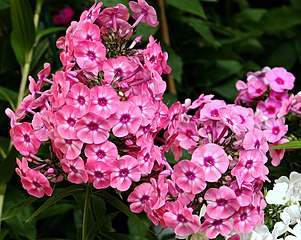
Phlox are annual flowers that grow from early spring until midsummer, with bottom covering flowering in the springtime and taller phlox flowering in the middle to late summer.
When in maturity, these plants produce many star-shaped, brightly colored blooms. You may get a phlox for practically any gardening since there are so many variations and sorts of garden phlox (many of which are native to North America).
Perennial phlox usually grows to a height of more than 2 feet. Most species are still not heat resistant, but high-temperature types may be available in warmer climates.
Garden Stock
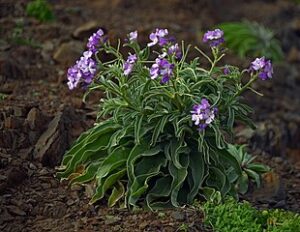
Garden Stock is a unique flower name. It is believed to be a link to annual growth’s “stocky” branches usage as an initial season of garden filler.
Its Latin term is believed to honor Peter Matthioli (or perhaps Mattioli), a 16th-century herbalist who served as King Ferdinand I of Austria’s doctor.
Cultivate the soil to eight to ten inches deep, breaking up huge clods and achieving a smooth finish.
Depending on the full proportions of your plants, spread just several seeds, each nine to 18 inches. 1/8 inch of fine dirt is just enough to cover them.
Garden Rock Cress
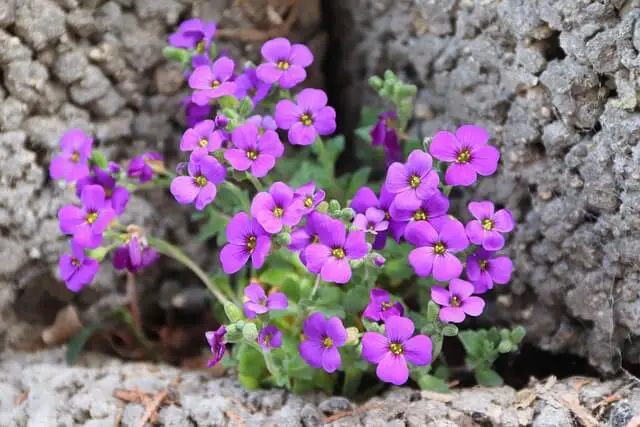
The Brassicaceae, or mustard family, includes rockcress, a herbaceous plant. Rockcress blooms, and leaves seem to be edible. Rockcress takes no special skills to grow, which is an excellent choice for a beginner gardener.
The most common applications for rockcress in gardening are as a lovely boundary in a rock garden or hanging down beyond a rock wall or edge. Rock cresses are mountain plants that survive in harsh environments, such as mountains and hills.
Although rockcress needs full sun, it will take moderate shade in hotter climates. Rockcress plants can be placed 15 to 18 inches (38 to 45.5 cm) widely and, therefore, will easily fill in to produce a mat in either open place.
Gaura
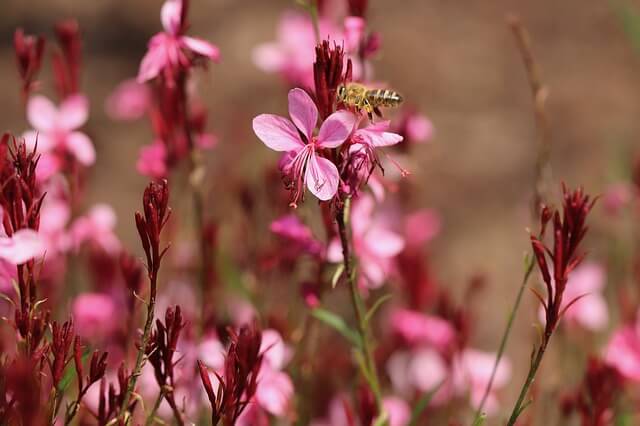
Gaura was a family of nearly 20 species in the night flower family (Onagraceae). However, it is most usually associated with Gauralindheimeri as a common name.
Gaura develops in early summer, generating long, branching, wiry floral stems that remain to grow into hard winter.
The graceful flowering stems reach a height of 3 to 4 feet, having clusters of miniature flowers developing in a clockwise pattern all along opened terminal panicles.
The blooms fall off again after flowering, exposing a clean stem. The fruit is a nut-like body with reddish-brown seeds. Whenever the fruits are fully grown, they turn a dark grayish-brown color.
Gerbera
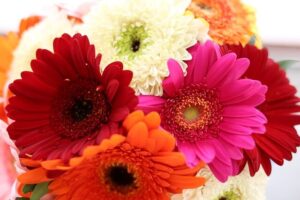
Gerbera daisies (Gerbera jamesonii) are renowned because of their brilliant, joyful daisy-like flowers. They come in many different sizes and colors, like pink, yellow, salmon, orange, and white, with blossom sizes ranging from 2 to 5 inches (2 to 13 cm) wide.
Gerbera daisy varieties come in a multitude of colors and bloom shapes (single, double, or multiple petals). Pick a good compact type since flower stems will be stronger on small plants, and one which matches the container size or planting area you will also be cultivating for better outcomes on how to manage a Gerbera daisy plant.
Geranium
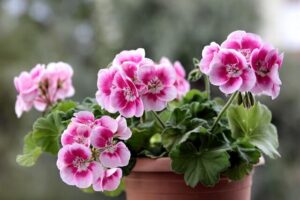
Geraniums have long been a gardener’s choice. They’re simple to grow, colorful, and have a pleasant smell. That’s how to cultivate geraniums at home and even in the garden!
Geraniums are often maintained indoors while surviving the winter, ignoring the fact that they can be kept outside during the hotter seasons of the year. However, if given sufficient light, plants can grow year-round indoors. It requires the soil to dry out a bit after watering, then fully water.
Waterless in the winter, so don’t allow the roots to completely dry up. Geraniums grow once they are permitted to go quiet during the wintertime when they consume less water and don’t grow as much.
Gladiolus
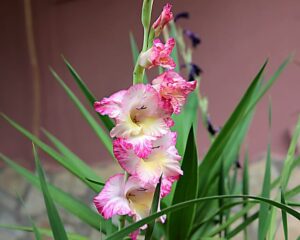
Gladiolus is a popular perennial with beautiful, colorful blooms & long flower spikes. Great cutting flowers and gladioli look stunning in summer flowers to cultivate gladioli on your lawn.
These gorgeous flowering plants, also known as “glads,” come in various colors and grow to be around 2 and 5 feet tall. Their blossoms also come in a variety of sizes, from “miniature” flowers that are less than three inches across to “giant” flowers that are more than 5 inches wide!
It requires 60 to 90 days for gladiolus corms to root, grow, and bloom, regardless of the type.
Globe Amaranth
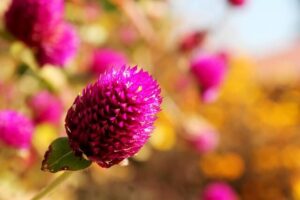
Globe amaranth is a tropical annual with long-lasting, globe-shaped flowers that come in a rainbow of colors. Drought-tolerant & xeriscape-friendly, these plants are perfect for beds, boundaries, and rock gardens.
The globe amaranth, Gomphrenaglobosa, is among 90 Gomphrena varieties in the Amaranthaceae family of flowering plants.
The vivid flower heads resemble clover rather than petals, and they have tubular bracts. They’re similar to strawflowers in that they’re stiff and papery. Every bract has a little white or yellow blossom that may be viewed up close.
Giant Hyssop

The herbaceous perennial Giant Hyssop belongs to the mint family, and also the majority of its members are native to North America. However, with many belonging from the Southwest.
They’re beautiful, aromatic, long-blooming plants with blossom spikes that appear for the rest of the summer. The colors vary from white to blue, plus tones of red and purple mixed. Giant Hyssops are necessary for a pollinator-friendly environment and are resistant to deer and rabbit grazing. They can also survive heat and drought.
Well-drained soils are important for this species, and wet winter feet in badly drained fertile soil will still do plants in. If you still have hard soil, plant in a garden bed or container. However, it is used in a pollinator garden, rock garden, or native area to attract pollinators.
Globe Flower

The genus Trollius is from the buttercup family, i.e. Ranunculaceae has approximately 20 species of perennial herbaceous plants, which are mostly native to wetlands in the North Temperate Zone.
Many horticultural cultivars of the common European globeflower (T. europaeus) feature ball-shaped yellow to orange flowers that are about 2.5 – 5 cm throughout and grow up to 60 cm (nearly 2 feet) high in damp gardens and along pond borders.
The dark green to coppery color leaves are usually 3 to 5 lobed, or split, like such a hand’s fingers. The greenish-yellow blossoms of the American spread globeflower (T. laxus) are widely present in the marshes of the Eastern U.S is just a white-flowered variant located in the northwest.
Goldenrod

Europe, Asia, and North and South America are all home to goldenrod. It thrives in fields and roadside ditches and is frequently regarded as a weed.
The yellow flowers of this plant appear in warmer months of fall. Because it is easy to cross-pollinate with some other plants, goldenrod has over 100 different species. Most of these are regarded to have health advantages in common.
Some form clumps with various stems, while others have just one stalk and very few branches. The hairy, toothed, lance-shaped leaflets and hairy stems of Canadian goldenrod (S. Canadensis) are sometimes planted as an ornamental garden. Solidagovirgaurea, a European garden plant that produces a yellow dye and also was formerly used in medicines, is a resource of yellow dye.
Godetia
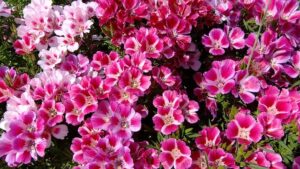
The previous genus name for such a satin blossom is Godetia. Godetia is a part of the evening primrose family (Onagraceae), which includes both the evening primrose flower (Oenothera) and fuchsia, the famous swinging basket plant. Some gardeners think the plant is as beautiful as it is because it remembers a significant event throughout American history.
Its blooms resemble that of an azalea because they are generally pink to white in color. They have four equal pieces and spread petals and are roughly 2 inches (5 cm) in diameter. Depending on the crop, the plants can reach a height of 12 to 30 inches (30-75 cm).
Globe Thistle
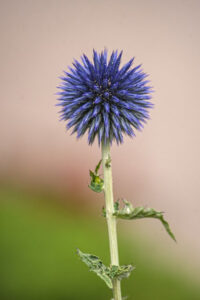
Globe thistle is a rapidly, modern-looking flower with traditional characteristics: Globe thistle plants seem to be extremely dry, deer resistant, and also a significant source of sweetness for butterflies as well as bees, and their circular blue blooms are apprehending in the warmer months border, but unlike those eye-catching flowers, globe thistle plants are hardy, deer resistant, and also a significant source of sweetness for insects and bees.
Whereas the spiny, spiky leaves keep away eating rabbits and deer, this even fills a significant role in the wildlife garden as just a plant host for colorful lady butterflies. Whenever the blooming season is finished, globe thistles give textural appeal with their gorgeous seed pods in the fall. Between May and June, grow your globe thistle.
Gooseneck Loosestrife
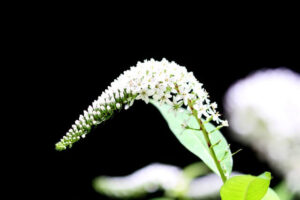
The Lythrum family consists of loosestrife. Loosestrife comes in a variety of colors, including pink, yellow, white, and purple. Purple loosestrife species are regarded as slightly harmful sometimes in zones, while gooseneck loosestrife is quite aggressive in others. It’s a good idea to check with the local extension office to see if the type you’ve selected is suitable for your location. There are various loosestrife gooseneck kinds to choose from, but the gardening loosestrife is the most popular.
The gooseneck loosestrife plant grows slowly and spreads to a width of approximately 3 feet (1 m), making it the ideal groundcover. It belongs to the primrose family and enjoys bright to partly sunny conditions. Gooseneck loosestrife blooms are small and white, with slender leaves that come to a point.
Golden Chamomile
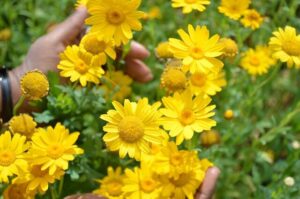
Golden-chamomile is a European transplant that is an intensively self-seeding perennial with a high risk of escaping. This plant is often used to make high-quality yellow, golden, and orange colors for textile dyeing for centuries.
Anthemistinctoria grows in fragrant hills up to 2-3 feet tall (60-90 cm) with finely ground, fern-like leaves and daisy-like flowers in variations of yellow, ranging from lemon yellow to canary yellow or creamy-white.
Its attractive leaf, which produces a herbal smell reminiscent of chamomile and is evergreen in warm areas, will provide some wintry color to the border.
The more this plant is fertile and nourished, the more it will spread. Drought resistant and deer resistant; however, butterflies love it!
Grevillea
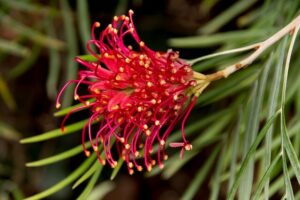
Grevillea is a genus of plants over 350+ species, They are mostly shrubs or tree based plants. It is also known by the name spider flowers. It belongs to the Proteaceae family, and grevillea is one of the garden plants which attract birds such as honeyeaters.
Great Periwinkle

The scientific name of this plant is Vinca major & it belongs to Apocynaceae. It is one of the beautiful looking flowers that is also known by the name blue periwinkle, bigleaf periwinkle, greater periwinkle. It is a perennial flowering plant which can grow up to 25cm but can spread heavily in the ground because they are mostly trailing vines.
Gypsophila
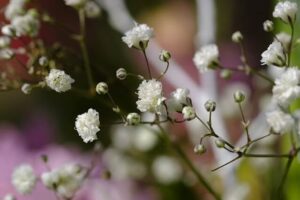
It is a genus of over 150 species and they have over 35 species which are called endemic because it is available in large numbers in specific locations. These plants belongs to Caryophyllaceae family and gypsophila are used in various herbal medicine and food products. IT can also be used for ornamental purposes & there can be some uses of this plant in shampoo and soaps.
Grape Hyacinth
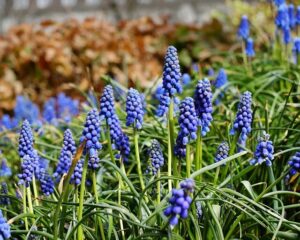
It is also known by the name Muscari, which is the genus of many species of hyacinths. Grape hyacinths just look bulb-shaped & they are native to southern & central europe, mediterranean basin. They are grown in bunches, the same as grapes grown. The color would be bluish and have a thick stem in it. They can be used as ornamental purpose in the garden.
Gumamela
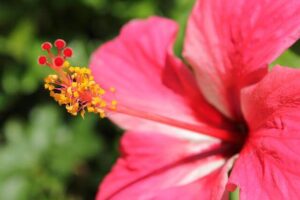
These are tropical hibiscus flowers that belong to the mallow family. These are fast growing shrubs that can grow up to 30 feet and that is why it is cultivated to create dwarf variety which limits to 2 feet height only to make it comfortable to grow as houseplant. There are over 300 species available of this plant and did you know the hibiscus has a long life and can be grown for many years till 45-50. They are hardy to zone 9 to 11 and the scientific name of gumamela is hibiscus rosa-sinensis.
Green Strawberry Hedgehog Cactus
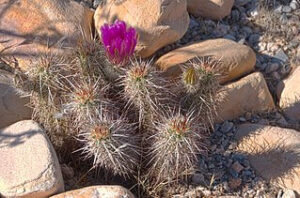
Green Strawberry Hedgehog Cactus are one of the cacti flowers that bloom in clusters with 20 more stems growing and they generally bloom in the summer season particularly in april. The scientific name of this plant is Echinocereus engelmannii & it belongs to cactaceae family. Generally they are native to Southwestern US, places which has more desert areas. Its stem generally grows up to 25 inches(64 cm).
Greater Masterwort
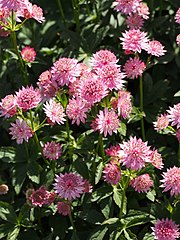
Also known by the name Astrantia major ‘Alba’, these are beautiful flowering plants that can be hardy to zone 1-7. These flowers come in greenish-white color & you can expect the blooms in late spring to summers. They best grow in full sun with good fertile soil. Climate is also an important factor growing greater masterwort. They can attract butterflies and can tolerate deer. It belongs to Astrantia & requires low to mid level maintenance. The height of the plant is 1-2 tall feet while it can spread the same length 1-2 feet long.
Goats Beard (Aruncus Dioicus)

Goat’s Horn Cactus (Astrophytum senile)
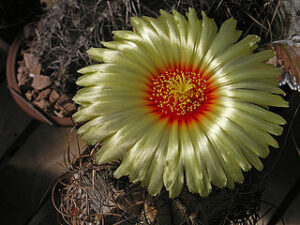
Goats Beard (Aruncus Aethusifolius)
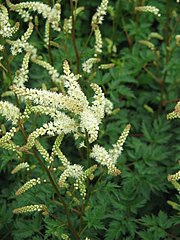
Wrap Up
I hope you get the answer on “Flowers That Start With G”, and if you like to read more articles on my site check below.
32 Flowers That Start With F – Unique List (Including Pictures)
